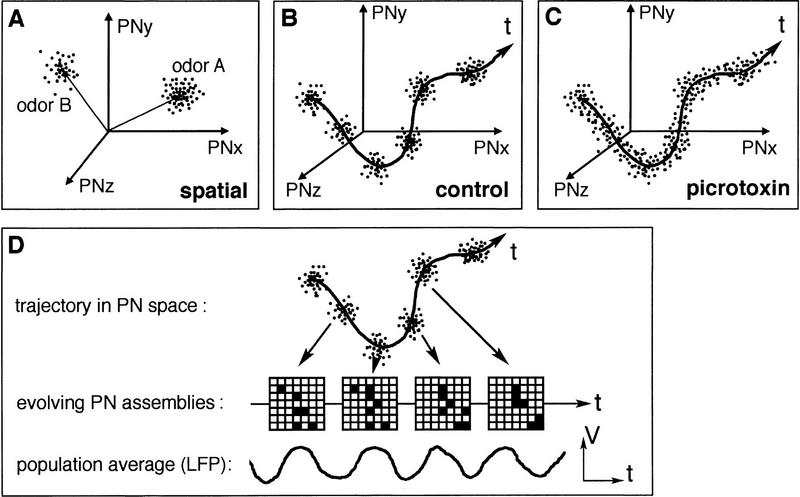Figure 2.
Schematic representations of odor-coding hypotheses in the antennal lobe (the analog of the vertebrate olfactory bulb). (A–C) If we consider the PNs as independent dimensions for the odor code, each odor can be represented within this “PN-space” by clouds of points (spatial code, A) or trajectories (spatiotemporal code, B–C). In A–C, odor representations have been projected from ∼830 (the number of PNs in the antennal lobe) onto three dimensions (PN x,y,z). In A, a spatial code is represented. In this scheme, each odor (e.g. A or B) can be seen as a vector pointing to a point (or cloud of points, given trial-to-trial variability) in PN space. This implies that the activity of each PN is measured by some average firing rate, or total spike count. In B, a spatiotemporal code is represented. In it, each odor is now represented by a trajectory in PN space, defined by a series of vectors (or points). Each one of these vectors corresponds to the state of the network of PNs at each cycle of the oscillation, as explained in D. Each cycle of the LFP oscillation is thus the result of an assembly of synchronized PNs and these PN assemblies evolve throughout the duration of the odor presentation. In C, the evolution of the representation in PN space is schematized in a PCT-treated antennal lobe. In this condition, PNs continue to fire with their normal slow temporal patterns (explaining the unchanged overall trajectory), but without the oscillatory synchronization (explaining the absence of clusters corresponding to the cycle-by-cycle assemblies).

